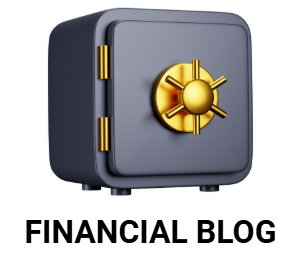There’s always some level of unpredictability in the stock market, but things are even more uncertain during times of social uncertainty — like a global pandemic or a presidential election. If you’re wondering what will happen to your portfolio when the market looks like it’s riding a rollercoaster, you’re not alone.
Fortunately, short-term volatility is fairly common in the stock market, and it doesn’t necessarily impact the long-term value of your investments. That’s why it’s crucial to understand the importance of staying invested during times of market volatility.
Staying Invested vs. Selling
It’s normal for the stock market to react to significant national, global, or political events, like a massive hurricane or a presidential election. It’s also normal to feel a little uncertain when you see big dips and spikes in the market.
If you feel worried when you see the value of your portfolio dip, that’s to be expected. However, it’s important to work through the instinct to “pull out” of your investments when the market dips. Pulling out your investments after a low market day, week, or month might feel like a wise response. However, you’ll potentially miss out on the recovery period.
If you choose to wait and leave your investments alone, you may have the chance to recover all of that lost value. Even better, you’ll give your investments the chance to become profitable — because, over time, the market has historically trended upwards.
When you’re feeling anxious as you watch your accounts dip, remember: Short-term losses simply don’t erase the market’s long-term gains in most cases.
Focus on Average Annual Returns
Want to see how market ups and downs can actually benefit you in the long run? Here’s an example:
Say you invested $10,000 in the S&P 500 in 2002. During the 20 years between 2002 and 2022, there were three bull markets (where the market rose by at least 20%) and three bear markets (where the market fell by at least 20%).
There were also several “black swans” — unexpected catastrophic events that altered the market significantly, both immediate and long-term. These black swans included the 2008 financial crisis and the 2020 COVID-19 pandemic.
During the 2008 recession, the average portfolio lost approximately 37% of its value. Many people pulled out their investments at the bottom of this crash because they were anxious about losing all their money. That’s a reasonable response!
If those people had stayed invested, however, they would have benefitted from the overall growth of the S&P 500. The average annual return between 2002 and 2022 was 9.52% over those two decades. That means an initial $10,000 investment from 2002 would have been worth $61,685 by the beginning of 2022.
Missing Out on Good Market Days
Staying invested isn’t just about the power of compounded gains. If you cut your losses, you also miss the chance to benefit from the exceptionally good days in the market. And these days can happen even in the midst of a downturn.
Think back again to the 2008 financial crisis and how stressful it was to watch the market. Between September 2008 and March 2009, the S&P 500 experienced a 37% decline. However, that time period also included some exceptionally good days — seven out of 10 of the market’s best days in 20 years happened during that time.
On September 29, 2008, the market fell 8%. If you had sold all of your stock, you would have avoided five more days of heavy losses in the coming months. However, you would also have missed seven days of exceptional upswings, with daily returns between 6% and 11%.
And the overall result of missing those seven excellent days is significant. As shown above, staying invested would have increased your initial $10,000 investment to over $61,000.
However, let’s say you sold all your stocks on September 29, 2008. You waited until things settled down and then bought stocks again on March 25, 2009. Then, 11 years later, you sold everything in March 2020 when the COVID-19 pandemic impacted the stock market. But once things evened out in April 2020, you bought stocks again.
If you had done this, you would have missed all 10 of the market’s best days between 2002 and 2022. That would have lowered your overall average annual return to 5.33%. And that would have reduced the 2022 value of your portfolio to just $28,260. That’s significantly less than $61,685 — because 10 of the best days in the market are that critical in the lifecycle of investments.


